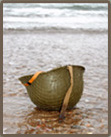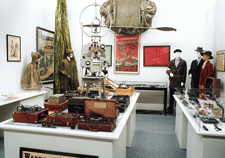 |
Nearly all spy weapons, devices and radios are in the collection, from wire garrotes, cigarette lighters that take pictures, knives of every imagined type, code equipment, lock picks, and silenced guns to miniature cameras, and radios in every form.
Sabotage equipment includes virtually all that was issued-from mines to sink ships to pressure switches to derail trains and hollowed-out coal to blow up boilers. Clandestine literature and photographs are displayed with German posters offering rewards for the capture of Resistance fighters. |
|
| |
| Parachutes and landing equipment, pistols, rifles and machine guns, and a comprehensive collection of clandestine knives are shown. The personal equipment of three clandestine agents of the American OSS are exhibited, as well as a collection of escape and evasion equipment issued to those deliberately behind enemy lines, and to air crews flying over Europe. |
|
| |
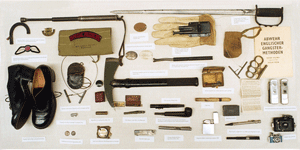 |
This case displays a wide array of spy equipment, including cameras, garrotes, and various firing devices. Among the items shown: A woman's shoe with a concealed heel blade; a paratrooper hatchet used by the Resistance to cut telephone and electric lines; a sword blade with a dagger handle, made by the OSS and dropped to Filipino guerrillas; cigarette lighter cameras; and a full range of cameras, both from the U.S. and the Soviets |
|
| |
| The Office of Strategic Services provided agents with a wide range of espionage tools, including silk maps; crossbows and arrows; miniature telescopes and compasses; barter kits; and a pipe that could be smoked without damaging the hidden compass and maps concealed inside.< |
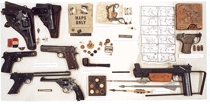 |
|
| |
| OSS Captain Geoffrey M.T. Jones parachuted into occupied France in early August 1944. His mission, codenamed "Rabelais", was to organize the Maquis forces prior to the Allied landings in southern France and to provide intelligence information via radio to Algiers. Jones, with the codename "York", had the French Underground clean out the main parachute and glider areas and then meet the airborne troops coming in. After the Allies landed on the Riviera, he coordinated information from Resistance elements he recruited and provided hundreds of reports of German activity from behind enemy lines in that area. Another important mission, carried out by Jones himself, was to obtain information about the harbor of Nice for the U.S. naval forces. That report, plus a map captured by Jones' group detailing all the German positions of retreat in southern France, and other papers showing Jones' work, are shown here. The map contains the blood stains of the German officer who was carrying it when he was shot to death by Resistance fighters. |
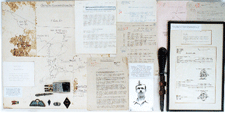 |
Jones served with the OSS in North Africa, France and Germany, receiving two battlefield promotions to Major. After the success of the Riviera invasion, he became commanding officer of successive OSS detachments on the Franco-Italian frontier. During the final campaigns in Nazi Germany, Jones commanded the OSS detachment, First U.S. Army, where he helped uncover Buchenwald.
His decorations include the U.S. Legion of Merit; the Bronze Star with Oak Leaf Cluster; the Purple Heart; the Order of the British Empire; Officier of the Legion of Honor; three Croix de Guerre; the Danish Medal for Freedom; the Donovan Medal; and the Italian Order of Merit.
|
|
| |
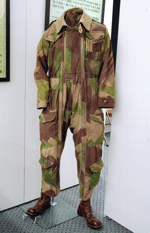 |
Camouflaged SOE airborne jumpsuit, used by, agents and Jedburg teams that dropped into occupied countries in Europe. These suits were designed to be worn over civilian clothing and gave the agent the ability to quickly shed the suit and get away from the landing zone. |
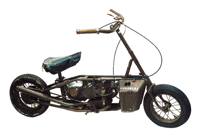 |
The Welbike, a small, portable motorcycle which can be folded to fit into a parachute container used for commandos or agents to rapidly leave a drop zone with their equipment. |
|
| |
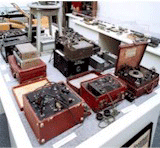 |
The museum's collection of short-wave radios contains virtually all used for clandestine broadcasts. |
 |
AN/PRC-1 model suitcase radio for sending and receiving shortwave communications. Issued by U.S. Army Military Intelligence. |
|
| |
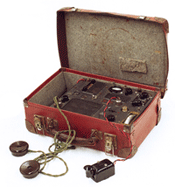 |
S.O.E, MODEL TYPE A, MARK III British suitcase radio, designed for transmission and reception of coded messages for up to 500 miles. The smallest clandestine radio of its type. |
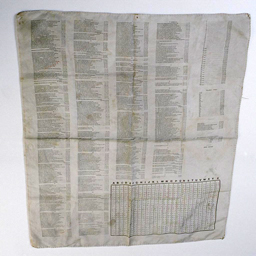 |
List of codes to be used by a British agent, printed on silk, containing four letter codes for a large number of sentences. Time on the air was the greatest danger as the Gestapo direction finders could rapidly pinpoint transmissions |
|
| |
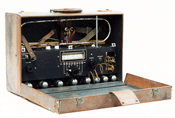 |
SCR-504 Direction-finding radio, containing a miniature hearing-aid-sized earpiece, jack and volume control hidden beneath the carrying handle, and a sensing rod antenna, which collapses into the case. Fitted into a suitcase so that it can be carried inconspicuously by an agent. Issued by U.S. Army Military Intelligence. |
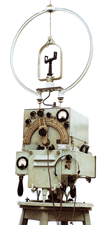 |
Nachfeldpeiler P57N German direction-finding radio, mounted inside a van, used to locate clandestine transmitters and receivers. This unit was used by the Germans in Italy after the occupation to locate resistance groups. The van could slowly traverse the streets to detect the transmitters and receivers used by resistance groups, and pinpoint the location to a very small area. |
|
| |
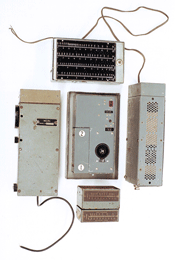 |
BRITISH MCR-1 radio designed to fit into biscuit tins. These were widely distributed to resistance groups in occupied Europe |
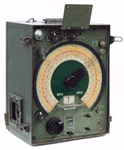 |
German Armed Forces radio direction-finder, Type Fu.NP.E. a/c. Used to take bearings on enemy radio transmitters in close areas. The scale underneath the handwheel showed the located transmitter. |
|
| |
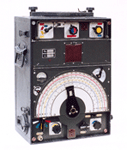 |
German Armed Forces direction-finding station, used for locating enemy short-wave transmitters. |
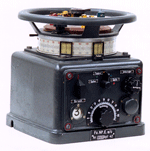 |
German Armed Forces radio intercept receiver, Type FHEc, used to determine enemy frequencies. |
|
| |
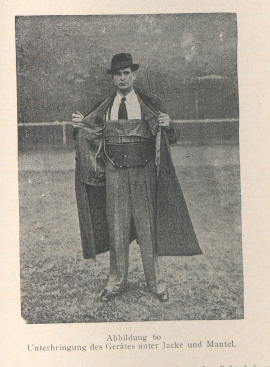 |
German Direction Finder worn by Gestapo to locate clandestine radios. |
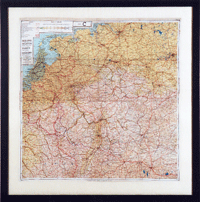 |
Escape map, printed on silk, showing escape routes for clandestine agents and shot-down pilots. |
|
| |
 |
Pencil fuses. These devices would detonate an explosive after a set time, giving the saboteur time to escape. Colored bands indicated the time delay before acid corroded a wire, releasing a striker that struck a percussion cap and a detonator. |
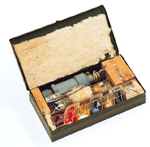 |
Acetone time-delay fuses. The color represented the concentration of the acetone, which ate through a celluloid disk, releasing a firing pin and detonating the explosives. |
|
| |
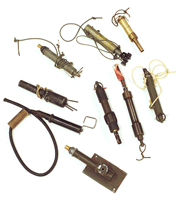 |
A variety of detonation devices. |
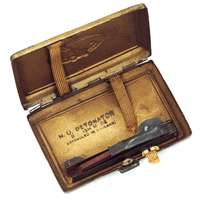 |
British cigarette case which exploded upon opening. |
|
| |
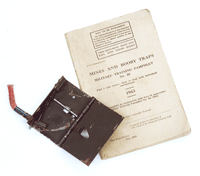 |
Booby traps, complete with instruction manuals.. |
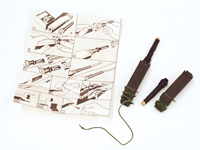 |
|
| |
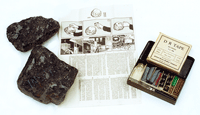 |
"Explosive Coal." This is a high explosive demolition charge camouflaged as a lump of coal. When properly assembled and thrown into a hot fire, it would explode violently. |
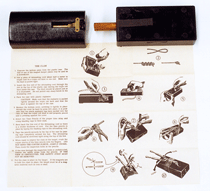 |
An exploding device known as "The Clam", complete with instructions. |
|
| |
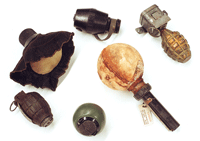 |
A variety of grenades used by saboteurs. |
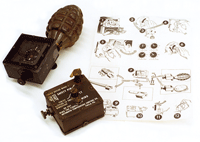 |
Booby trap utilizing an American hand grenade. |
|
| |
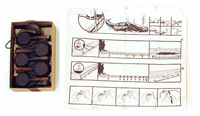 |
Detonating devices to be clamped to a railroad track, resembling actual railroad signals, and the instruction guide. |
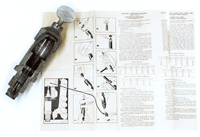 |
Time-delayed sabotage detonation device. |
|
| |
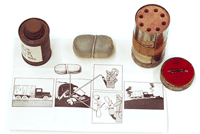 |
Caccolube, an abrasive substance added to the oil tank of a vehicle to destroy an engine.
|
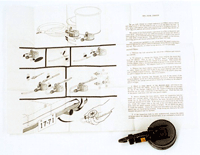 |
Vehicle sabotage kit, used to disable engines. |
|
| |
 |
The McGlaglen "Peskett"close-combat weapon. This multipurpose device contained a knife blade, a garrotte, and a heavily-weighted ball. |
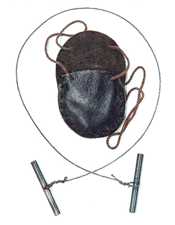 |
Garrottes were most commonly used to strangle sentries. |
|
| |
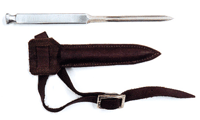 |
Sleeve dagger. |
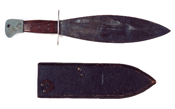 |
The Smatchet, a heavy-bladed knife capable of cutting through helmets. |
|
| |
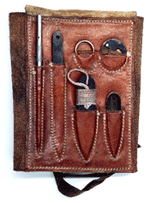 |
A collection of blades and knives to be used by spies in the event of a capture. |
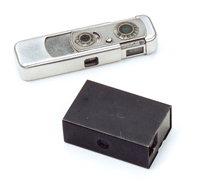 |
The most commonly-used espionage camera was the Minox; shown with a British camera that fit inside a match box. |
|
| |
 |
Instructor's model of a pencil containing a dagger. |
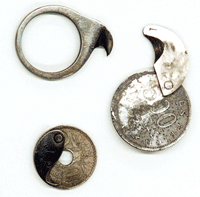 |
A coin with a swivel blade was unlikely to be detected in an initial search. |
|
| |
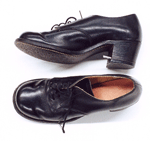 |
Shoes with a hidden blade. |
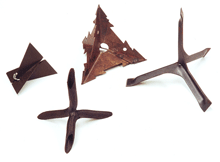 |
Tire spikes, used to puncture tires on both vehicles and airplanes. |
|
| |
 |
A saboteur's knife, featuring a special blade for cutting tires as well as tools for breaking in to buildings. |
 |
Container to carry a message on a pigeon's leg. |
|
| |
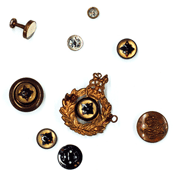 |
Compasses were hidden in all types of devices. |
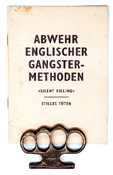 |
The Abwehr, the German military spy service, issued this handbook on "English Gangster Methods", along with brass knuckles. |
|
| |
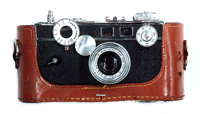 |
Arthur Cooke's camera that he used while an OSS agent behind Japanese lines in China. |
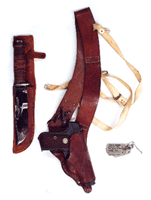 |
OSS agent John O'Keefe was sent to Albania to organize and support resistance forces. His OSS-issued Colt .32 caliber automatic was standard equipment. |
|
| |
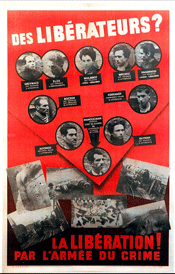 |
Poster denouncing members of the Immigrant Workers, a resistance group linked to the French Communist Party. The group was made up mainly of Jews from Central Europe who targeted Nazi officials and hangouts in Paris. The group's leader, Missak Manouchian, pictured in the center, was arrested with 22 others in late 1943 and executed in February 1944. Following the arrest and execution, several versions of this poster were displayed in Paris. |
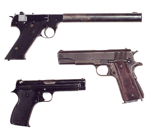 |
Pistols commonly used by the Resistance (including an OSS-silenced .22 caliber automatic, shown at top). |
|
| |
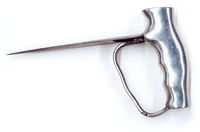 |
Dagger with a very effective grip. |
|
| |
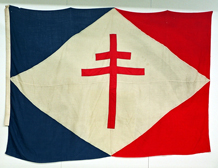 |
This French flag accompanies De Gualle's appeal to the French populace: "To All Frenchmen: France has lost a battle! But France has not lost the war! A makeshift government may have capitulated, giving way to panic, forgetting dishonor, delivering their country into slavery. Yet nothing is lost! Nothing is lost because this is a world war. In the free universe, immense forces have not been brought into play. Some day these forces will crush the enemy. On that day, France must be present at the Victory. She will regain her liberty and her greatness. This is my goal, my only goal. That is why I ask all Frenchmen, wherever they may be, to united with me in action, in sacrifice, and in hope. Our country is in danger of death. Let's fight to save it!" |
|
| |
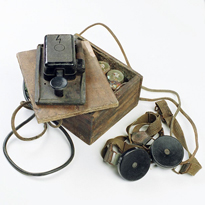 |
Clandestine radio made from used parts by the French Resistance. |
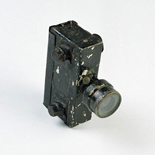 |
Camera made by the French Resistance from electrical parts. |
|
| |
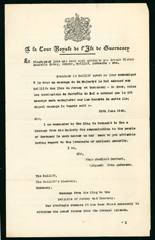 |
King George VI informs the Channel Islands that Britain must abandon them to Germany, June 24, 1940. The Channel Islands were the last territory in Europe to be liberated, being occupied until the day Germany surrendered. |
|
| |
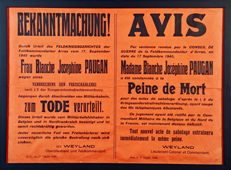 |
| |
Black Propaganda
The most fascinating area of propaganda, black, appears to orginate from one source when it is actually created by the opposition. German black was never well done and had no impact; British, on the other hand, was very cleverly done and very effective. This collection includes forged currency, postage stamps, newspapers, official army discharge documents, fake ration stamps, identity papers-just about everything was forged by the British. This section incorporates the collections of the pioneer collectors in this field and is exceeded only by the British Library. |
| |
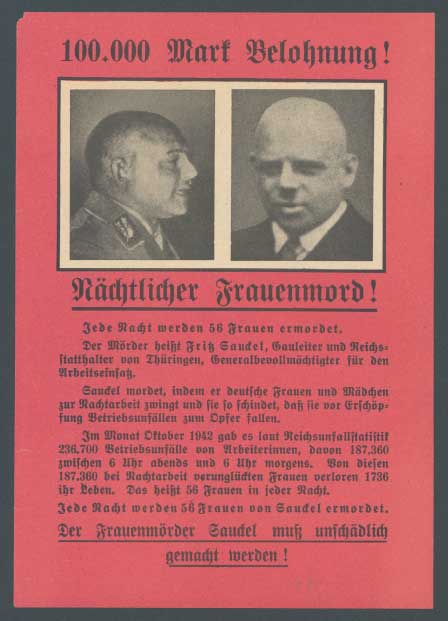 |
Forged Wanted Poster |
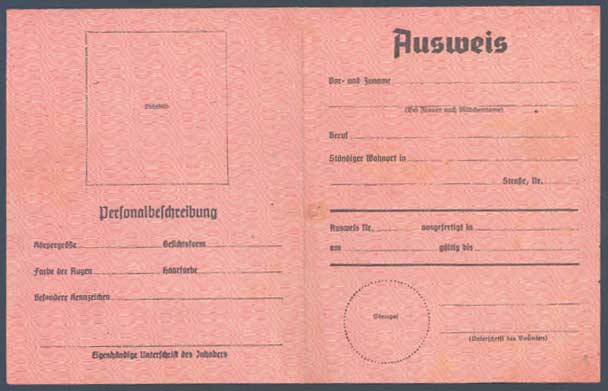 |
German Identification card forged by the British. |
|
| |
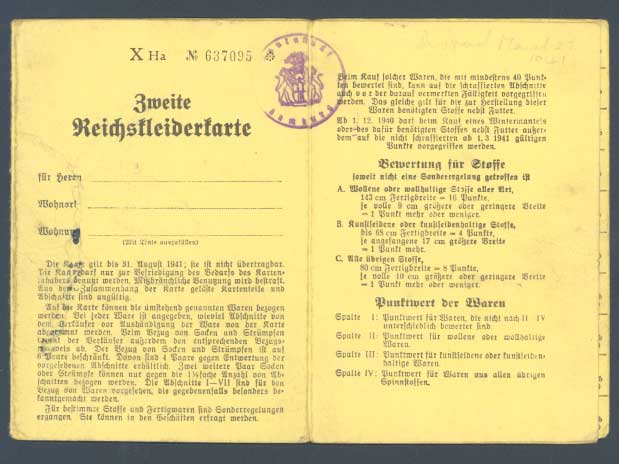 |
Forged clothing Ration book |
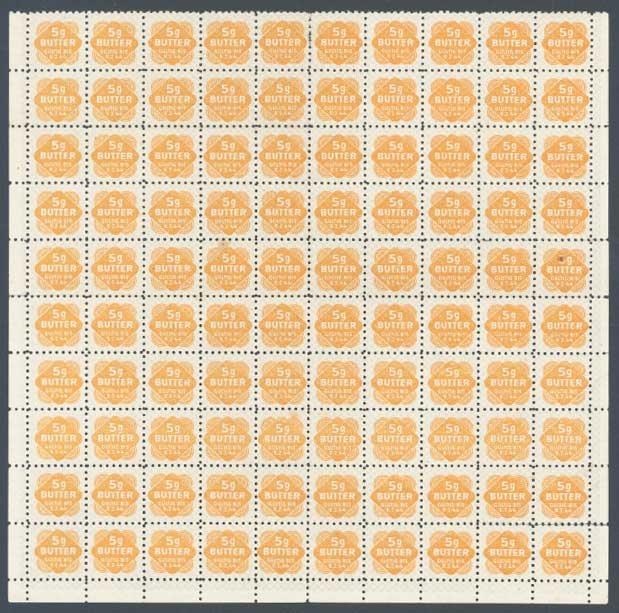 |
Forged Ration Stamps |
|
| |
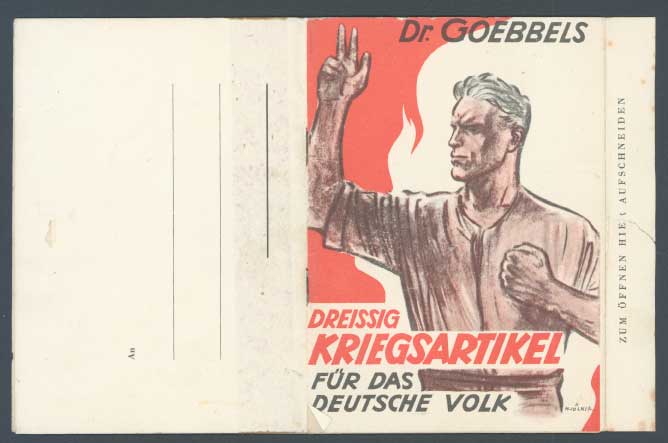 |
Fake Cover to a British propaganda booklet |
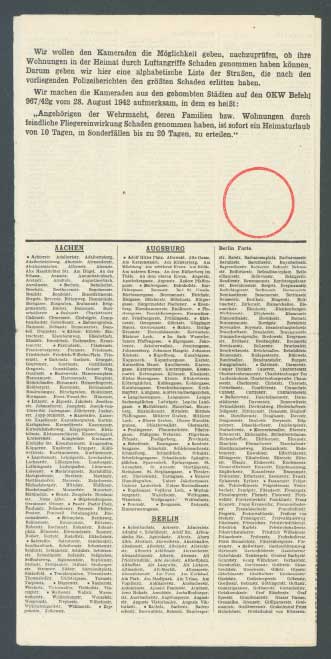 |
List of people killed in air raids supposedly issued by the Red Circle Resistance movement, which was actually British. |
|
| |
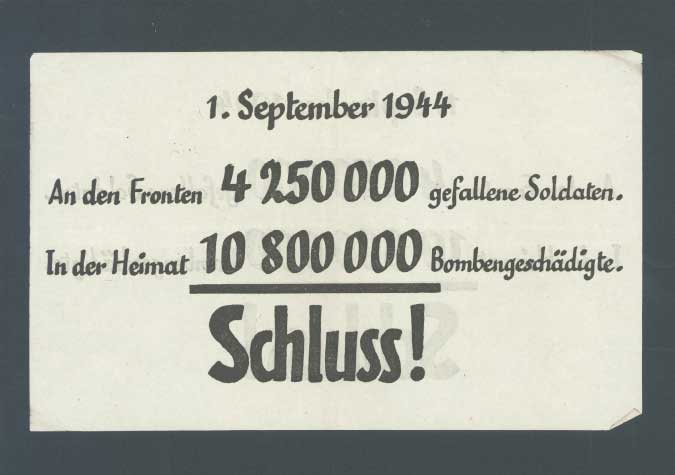 |
British created poster stating number of German soldiers and civilians killed, supposedly issued by the Schluss Group to end the war. |
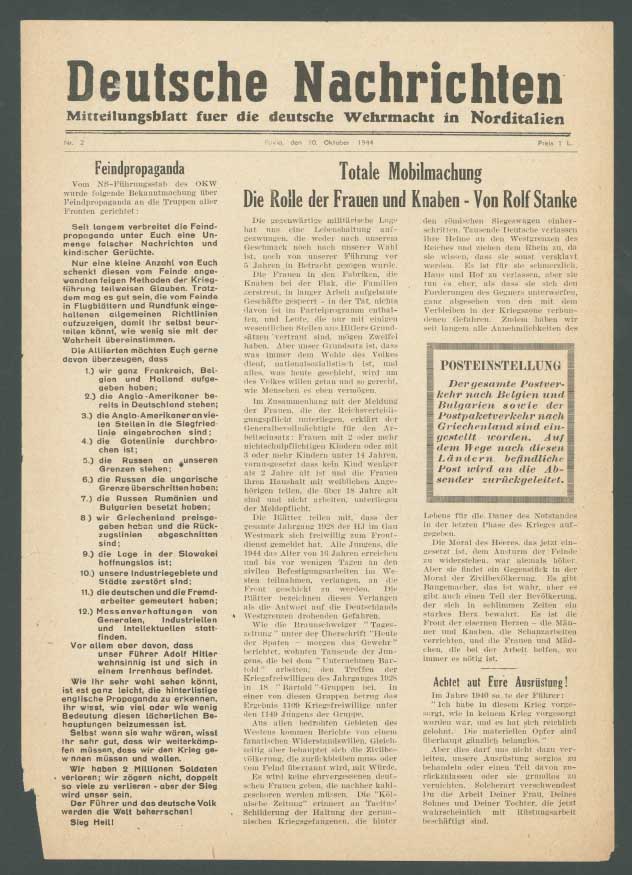 |
German troop newspaper warning soldiers that the British are forging troop newspapers. This itself is a British forgery. |
|
| |
 |
German forgery of English £50 note. |
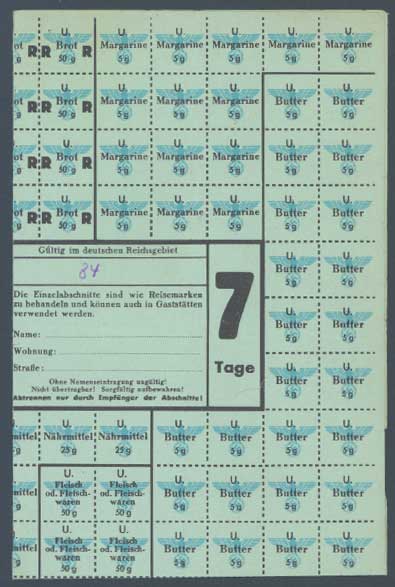 |
British forgery of ration coupons. |
|
| |
 |
Forged wanted poster encouraging Germans to apprehend and report anyone who remotely resembled the mythical criminal Karl Vollmeyer. A reward of 10,000 Reichsmarks is offered. Intended by the British to create more work for the police and distrust among civilians. |
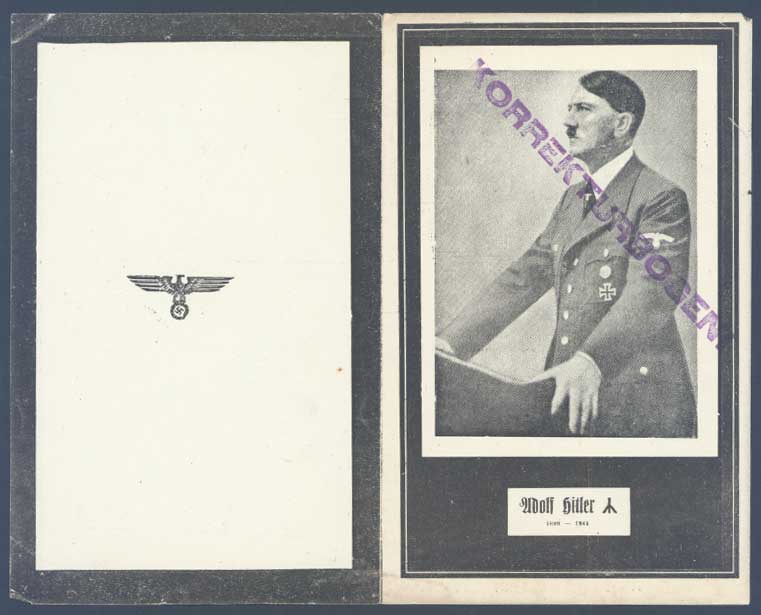 |
Notice of Hitler’s death, part of an elaborate British plot to convince Hitler that Goering was planning on assassinating him and seizing power. |
|
| |
 |
The British Plans for Black Propaganda Campaign called Schluss.. |
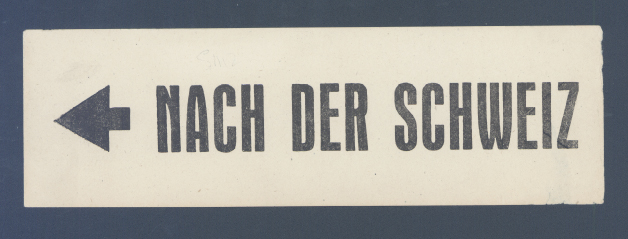 |
The way to Switzerland |
|

